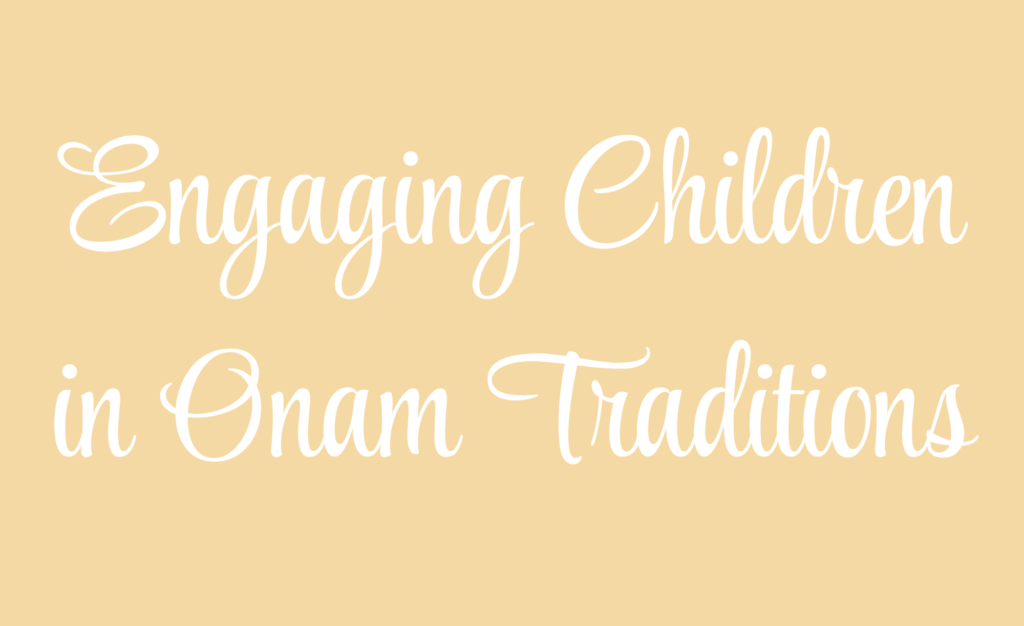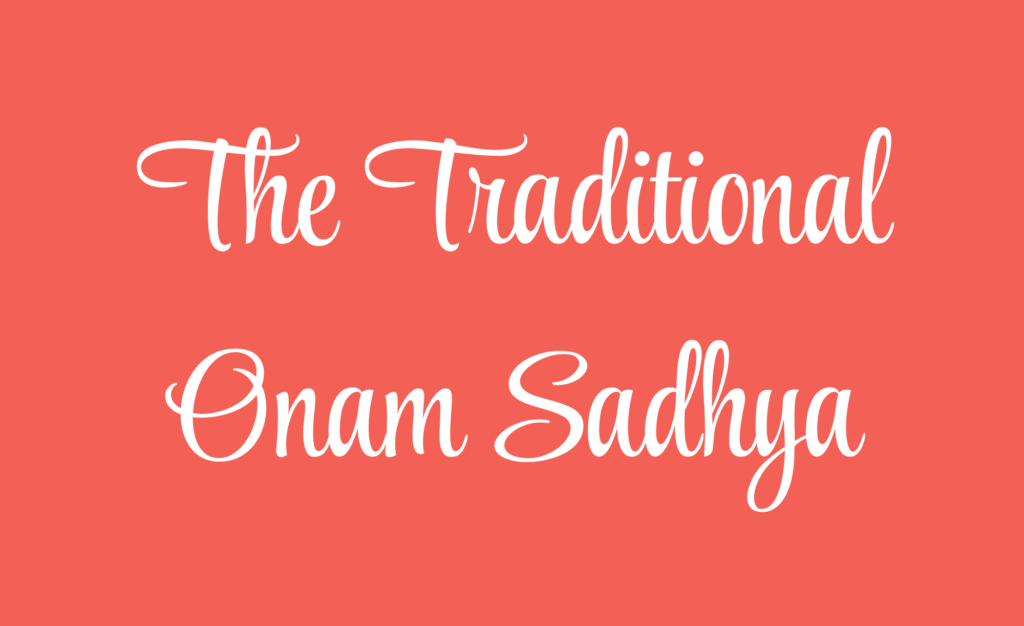Onam Celebrations Outside Kerala
Celebrating Onam outside Kerala presents both a challenge and an opportunity for Malayali families to creatively adapt and preserve their rich cultural traditions. While the environment may be different, the spirit of Onam remains the same—it’s a time for togetherness, joy, and cultural pride. Here are various ways families can celebrate Onam away from Kerala, with real examples and practical tips on how to include children in the festivities.
Community Gatherings and Virtual Celebrations
Example: Onam in New York In New York, the Malayali community often comes together to celebrate Onam with grandeur. Cultural organizations such as the Kerala Cultural Association of North America organize events where families participate in traditional games, Pookalam competitions, and a grand Onam Sadhya. These gatherings provide a sense of belonging and help maintain cultural ties.
Involving Children:
- Pookalam Competitions: Encourage children to participate in Pookalam competitions by designing their own flower arrangements. If fresh flowers are hard to come by, use colored paper, tissue paper, or even recycled materials to create a vibrant Pookalam.
- Cultural Performances: Many community events include performances like Thiruvathira (a traditional dance), where children can be involved. Organize practice sessions at home or with local friends where children can learn and perform these dances.
- Virtual Celebrations: During times when physical gatherings aren’t possible, like during the pandemic, many families turned to virtual celebrations. Families from different cities or even countries connected via video calls to share their Onam Sadhya, show off their Pookalams, and even organize virtual Thiruvathira dances. Children can help set up the technology, coordinate the virtual event, or even lead a dance session online.
Onam Sadhya: Recreating the Feast at Home
Example: Onam in Dubai In Dubai, where many Malayalis live, Onam is celebrated with as much enthusiasm as in Kerala. However, due to the availability of ingredients and different lifestyles, families often adapt the traditional Onam Sadhya to suit their circumstances.
Involving Children:
- Cooking Together: Involve children in the preparation of the Onam Sadhya. Simple tasks like washing vegetables, helping to mix ingredients, or setting the table can make them feel involved. For younger children, creating a “mini Sadhya” with their favorite dishes can be a fun way to introduce them to the tradition. For example, they could make a simple payasam with your guidance or even decorate the banana leaves with their own creative designs using edible ingredients.
- Explaining Each Dish: Use the cooking process as a learning opportunity. Explain the significance of each dish and why it’s included in the Sadhya. You can turn it into a fun quiz where children guess the names of the dishes or the ingredients used.
- Sharing Stories: During the meal, encourage elders to share stories of how they celebrated Onam as children. These stories not only entertain but also provide children with a deeper understanding of their cultural heritage. For example, a grandparent might share how they used to gather fresh ingredients from their backyard or how the entire neighborhood would come together to prepare the Sadhya.
Pookalam: Adapting the Floral Tradition
Example: Onam in London In London, where fresh tropical flowers might not be readily available, Malayali families have adapted the tradition of making Pookalams by using locally available flowers, artificial flowers, or even colored powders and rangoli materials.
Involving Children:
- Creative Pookalam Designs: Encourage children to think outside the box by designing Pookalams using materials available in your area. For example, you could use fall leaves, pebbles, or even colored rice. This not only keeps the tradition alive but also sparks creativity and resourcefulness in children.
- Pookalam Craft Projects: If space or materials are limited, children can create paper Pookalams using construction paper or drawing them on large sheets of paper. These can be used to decorate the house or sent as virtual greetings to family members and friends.
- Educational Aspect: While creating the Pookalam, engage children in conversations about the significance of each color and pattern. This can also be an opportunity to teach them about the different types of flowers traditionally used in Kerala and their meanings.
Vallam Kali and Pulikali: Bringing the Festivities Home
Example: Onam in Singapore In Singapore, where space might be limited for grand outdoor celebrations, families have found innovative ways to bring the excitement of Vallam Kali (boat races) and Pulikali (tiger dance) into their homes.
Involving Children:
- Vallam Kali in Miniature: Organize a mini boat race using toy boats in a bathtub, pool, or even a large water-filled basin. Children can decorate their own boats and race them, creating a fun and competitive atmosphere reminiscent of the real Vallam Kali.
- Pulikali Dance: Host a Pulikali dance at home where children can dress up in homemade tiger costumes. Face painting with safe, non-toxic paints can be a fun activity, and children can perform their own tiger dance. If organizing this as a group activity isn’t feasible, consider creating a virtual Pulikali parade where children can showcase their costumes and dance moves to family and friends online.
- Storytelling with Dance: Use Pulikali as an opportunity to discuss the tradition’s history and how it reflects the playful and joyful spirit of Onam. Encourage children to create their own stories or choreograph their own dances, which they can perform for the family.
Blending Old and New Traditions
Example: Onam in Canada In Canada, where the weather and environment might be vastly different from Kerala, families often blend traditional practices with new ones that suit their current lifestyle and surroundings.
Involving Children:
- Fusion Sadhya: Create a fusion Onam Sadhya by incorporating local ingredients or dishes into the traditional meal. For instance, you might replace traditional Kerala vegetables with those that are locally available, or add a twist to a classic dish. Encourage children to help in the kitchen by suggesting or experimenting with new recipes that combine the best of both cultures.
- Outdoor Celebrations: If the weather permits, consider taking the celebration outdoors. Organize a picnic-style Sadhya in a local park, complete with games and activities that children can enjoy. You can introduce traditional Onam games like Uriyadi (pot-breaking) or tug-of-war, adapted for the outdoor environment.
- Art and Craft Projects: Engage children in creating Onam-themed crafts, such as paper flowers for a Pookalam, decorating banana leaves, or making small boats for a display. These projects not only keep them busy but also help them connect with the festival in a hands-on way.
- Digital Story Sharing: Encourage children to create digital stories or short videos about how they celebrate Onam, which can be shared with friends and family members who are far away. This modern twist helps bridge distances and keeps the connection to tradition alive.
Family Conversations and Storytelling
Example: Onam in Australia In Australia, where the cultural landscape is diverse, Malayali families often use Onam as an opportunity to share their heritage with their children and the broader community.
Involving Children:
- Oral Histories: Encourage grandparents or elders to share their memories of Onam from when they were children. These oral histories can be recorded or written down as a family project, creating a legacy that children can treasure and pass on.
- Intergenerational Activities: Plan activities that involve multiple generations, such as cooking a Sadhya together or making a family Pookalam. Children can learn not only the “how” but also the “why” behind each tradition from their elders.
- Cultural Exchange: In multicultural settings, use Onam as an opportunity for a cultural exchange. Children can invite their friends from different backgrounds to participate in the celebrations, explaining the significance of each tradition and sharing the joy of the festival. This not only strengthens their own understanding but also promotes cultural awareness and appreciation among their peers.
Celebrating Onam outside Kerala may require some creativity and adaptation, but it also offers a unique opportunity to blend tradition with new experiences. By involving children in every aspect of the festival—from cooking and decorating to storytelling and performing—families can ensure that the essence of Onam is preserved and passed on to the next generation. Through these activities, Onam becomes more than just a memory of home; it becomes a living, evolving tradition that brings families closer, no matter where in the world they are. By celebrating Onam with love, creativity, and inclusivity, families can keep the spirit of Kerala alive, nurturing a sense of identity and belonging in their children, while also creating new memories that will last a lifetime.






